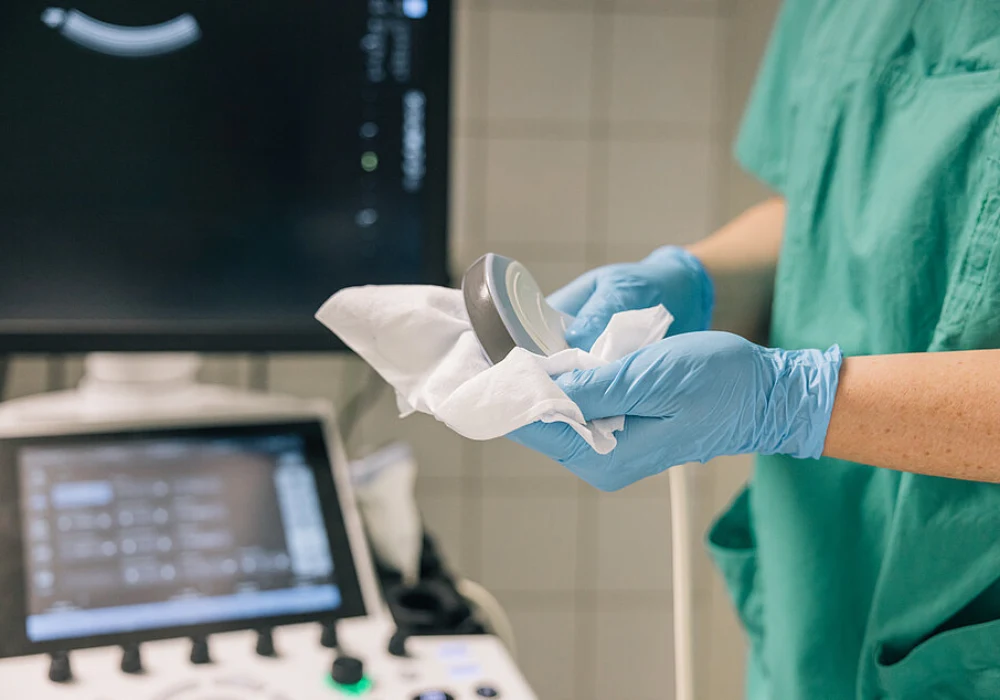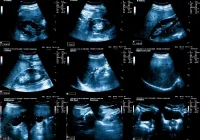Efforts to decarbonise imaging often prioritise high-energy modalities, yet a comprehensive life cycle assessment of adult diagnostic ultrasound in a university hospital shows a different profile. Most greenhouse gas (GHG) emissions were not tied to scanner manufacture or electricity, but to routine supplies and linens used around examinations. Single-use items and laundering dominated the annual footprint, with equipment and power playing comparatively minor roles. The analysis also mapped broader environmental burdens and highlighted operational practices that shape resource use, including laundering parameters, materials selection and data retention. The findings point to immediate levers that sit beyond the console, suggesting that supply optimisation and smarter operational choices offer greater returns than focusing solely on cleaner power or incremental efficiency gains in hardware.
Supply Chain, Not Socket: What Drives Emissions
Across one year of adult diagnostic ultrasound operations, linens accounted for 35% of GHG emissions and disposable supplies for 34%, forming the majority of a 17.0 kt CO2e total. Scanner production contributed 7% and scanner energy use 3%. On a per-scan basis, emissions were about 1 kg CO2e. Switching ultrasound power to solar photovoltaics would have reduced cumulative GHGs by only 12% to 15.0 kt CO2e, underscoring that electricity is not the main lever.
Within linens, about 67% of 5.5 kt CO2e arose from laundering and the remainder from textile production across a 75-use lifespan. Flat sheets used to cover exam tables or patients represented 56% of linen-related GHGs at 3.1 kt CO2e per year, followed by bath towels at 24% (1.3 kt CO2e) and thermal blankets at 13% (0.7 kt CO2e). These impacts reflect the high turnover of routine items needed for patient comfort, hygiene and gel removal.
Disposable supplies presented a similarly concentrated profile. Ultrasound transmission gel was the largest single contributor within disposables at 1.6 kt CO2e per year or 32%, followed by exam gloves at 1.4 kt CO2e or 28%. Other contributors included probe covers and bags, absorbent underpads and wipes. The recurring scale of these items outweighed the emissions tied to scanner manufacture and power during use, making supply intensity the dominant feature of the ultrasound footprint in this setting.
Must Read: Greener Imaging: Evidence on Radiology’s Footprint
Broader Environmental Impacts and Practical Levers
Patterns observed for GHGs generally mirrored other environmental burdens. Production and disposal of single-use supplies dominated several categories beyond climate, including ozone depletion, non-carcinogenic toxicity and ecotoxicity. Drivers included inputs such as terephthalic acid used in polyester and polyethylene and metals mining and processing for circuitry and electricity distribution infrastructure. Linens were a large source of eutrophication impacts, contributing 46%, due to nutrient runoff associated with conventional cotton agriculture and wastewater from laundering.
The results point to practical levers embedded in day-to-day practice. For linens, adhering to but not exceeding recommended laundering parameters can limit energy and chemical use without compromising hygiene. Selection of textile inputs also matters, as conventional cotton carries embedded impacts from fertilisers and pesticides, strategies that extend textile lifespan can reduce production-phase burdens. At the point of care, avoiding unnecessary use of table covers and fitted sheets where clinically acceptable can lower laundering frequency and material throughput.
For disposables, ultrasound gel stands out due to the combination of product mass and packaging. The bulk of impacts derive from the gel and its plastic containers that enter the waste stream after use. Matching gel volumes to clinical need, minimising residual gel discarded with empty bottles and pursuing feasible recycling routes for containers can reduce waste. Gloves, as the second-largest disposable contributor, merit attention to align use with clinical requirements and avoid routine over-consumption. For sterile probe covers, targeted reductions are possible where evidence supports safety with appropriately disinfected probes, concentrating single-use materials on cases where sterility is essential.
Digital Footprint, Energy Context and Modality Choice
Data infrastructure adds a further dimension to resource use. The site permanently stored 2 PB of imaging data, with typical ultrasound studies averaging 137.8 MB per scan and potentially approaching 500 MB where more stills and cine clips are retained. As archives expand, additional servers and power are required. Standardising protocols to capture and retain the necessary images for diagnosis, limiting cine acquisition where appropriate and removing old or damaged files can slow storage growth. Vendor solutions that generate derivative images from core data rather than storing each file individually can also lower storage needs. In general, large-scale cloud facilities can be more resource-efficient than small local server rooms, although any approach benefits from best-practice airflow, cooling and energy management.
The energy profile of ultrasound equipment remains comparatively modest versus CT and MRI, both in production and during use. Preferential use of ultrasound where clinically appropriate can therefore lower departmental energy consumption and associated costs while maintaining diagnostic capability. Yet because the footprint here is primarily driven by linens and disposables, decarbonisation efforts that focus only on electricity or equipment efficiency will miss most of the available gains. Interventions that address supply intensity, laundering and data retention offer broader returns and many are transferable across modalities.
Interpretation should account for boundaries. Findings arise from a single adult diagnostic practice operating 24 hours a day. Energy metering for two scanners occurred over two weeks in April 2023 and was extrapolated to one month, and utilisation patterns may vary by season. Some supplies stored near ultrasound areas may have supported non-ultrasound activities, potentially inflating the ultrasound share of linens and disposables. These factors frame the results while not altering the central pattern that supplies predominated over equipment and electricity.
In this adult hospital context, diagnostic ultrasound displayed a supply-driven environmental profile, with linens and single-use items responsible for most GHG emissions and a significant share of other impacts. Equipment manufacture and electricity use were minor by comparison, and switching scanner power to solar would have delivered only a modest reduction. The most effective levers lie in linen management, adherence to appropriate laundering parameters, targeted reduction of disposable products such as gel and gloves and disciplined data retention. Aligning operational practice with these insights can reduce emissions and costs while preserving access, safety and diagnostic quality.
Source: Journal of the American College of Radiology
Image Credit: iStock









